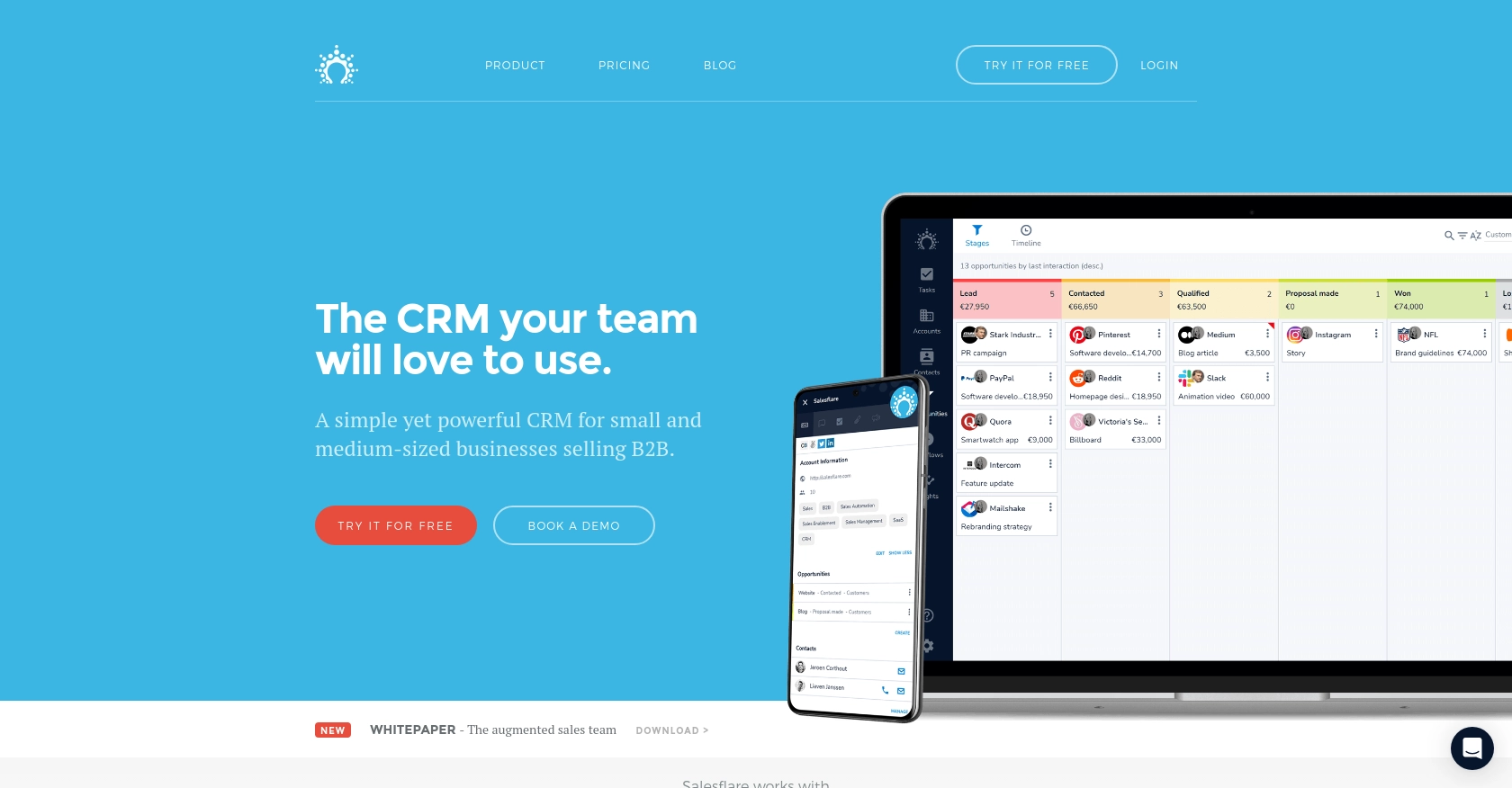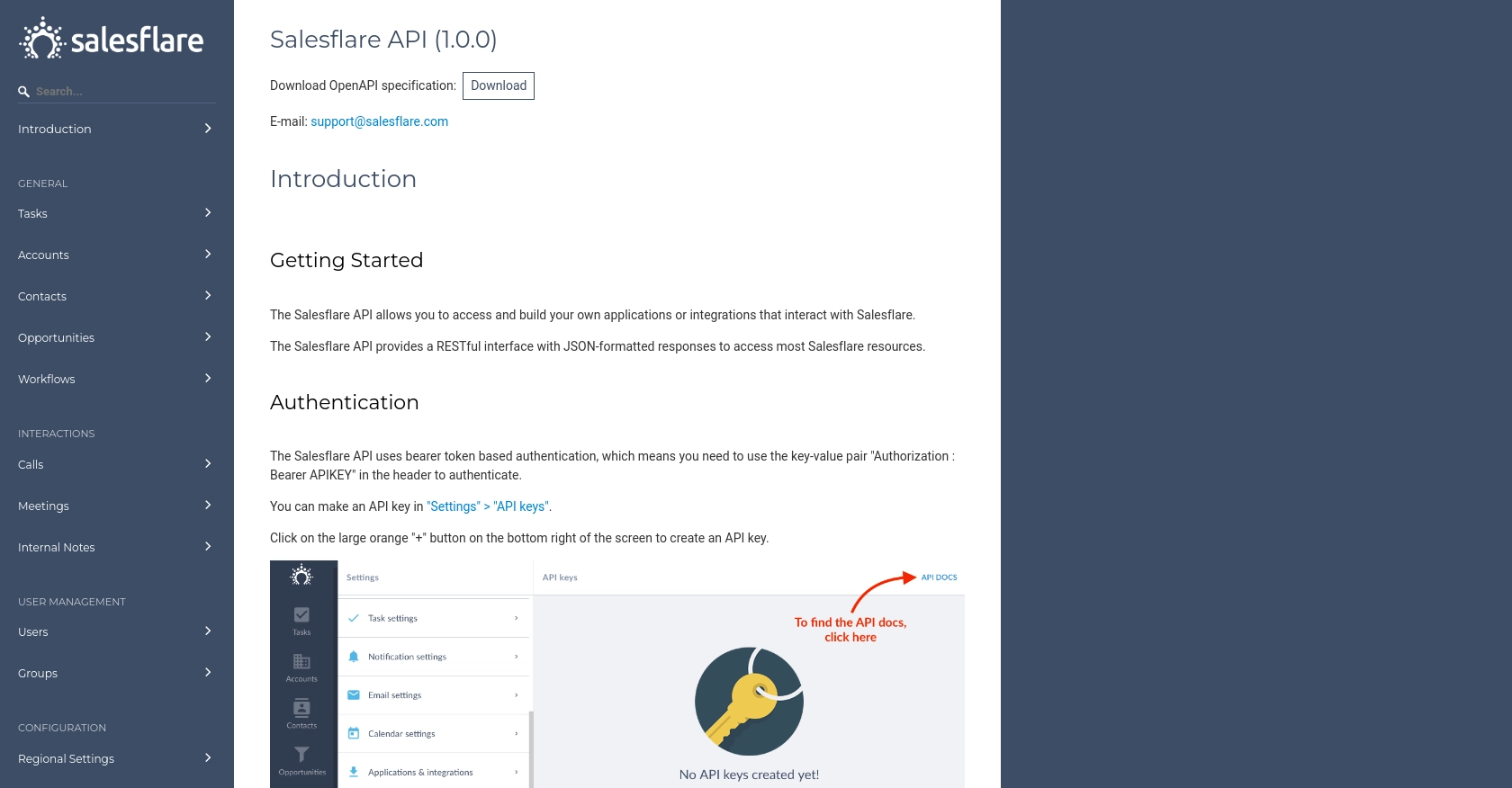How to Get Contacts with the Salesflare API in Python

Introduction to Salesflare API Integration
Salesflare is a powerful CRM platform designed to help businesses automate their sales processes and manage customer relationships more effectively. Known for its user-friendly interface and robust features, Salesflare is a popular choice among small to medium-sized businesses looking to enhance their sales operations.
Integrating with the Salesflare API allows developers to access and manage customer data seamlessly. For example, a developer might use the Salesflare API to retrieve contact information, enabling personalized communication and targeted marketing campaigns. This integration can significantly streamline workflows and improve customer engagement.
Setting Up Your Salesflare Test Account for API Integration
Before you can start interacting with the Salesflare API, you need to set up a test account. This will allow you to safely experiment with API calls without affecting any live data. Salesflare offers a straightforward way to create a test account, which is essential for developers looking to integrate and test their applications.
Creating a Salesflare Account
If you don't already have a Salesflare account, you can sign up for a free trial on the Salesflare website. This trial provides access to all the features you need to test the API integration.
- Visit the Salesflare website and click on the "Start Free Trial" button.
- Fill in the required information, such as your name, email, and company details.
- Follow the instructions to complete the registration process.
Generating Your Salesflare API Key
Salesflare uses API key-based authentication to secure API requests. Follow these steps to generate your API key:
- Log in to your Salesflare account.
- Navigate to the "Settings" section from the dashboard.
- Find the "API Keys" tab and click on it.
- Click on "Generate New API Key" and provide a name for your key to help you identify it later.
- Copy the generated API key and store it securely, as you will need it to authenticate your API requests.
With your API key ready, you can now proceed to make API calls to retrieve contact information using Python.

sbb-itb-96038d7
Making API Calls to Retrieve Contacts with Salesflare API in Python
To interact with the Salesflare API and retrieve contact information, you'll need to use Python. This section will guide you through the process of setting up your environment, writing the code, and handling potential errors.
Setting Up Your Python Environment for Salesflare API Integration
Before making API calls, ensure you have the necessary tools and libraries installed. You'll need Python 3.x and the requests library to handle HTTP requests.
- Ensure Python 3.x is installed on your machine. You can download it from the official Python website.
- Install the
requestslibrary using pip:
pip install requestsWriting Python Code to Retrieve Contacts from Salesflare
With your environment set up, you can now write a Python script to retrieve contacts from Salesflare using your API key.
import requests
# Define the API endpoint and headers
url = "https://api.salesflare.com/contacts"
headers = {
"Authorization": "Bearer YOUR_API_KEY"
}
# Make a GET request to the Salesflare API
response = requests.get(url, headers=headers)
# Check if the request was successful
if response.status_code == 200:
contacts = response.json()
for contact in contacts:
print(contact)
else:
print(f"Failed to retrieve contacts: {response.status_code} - {response.text}")
Replace YOUR_API_KEY with the API key you generated earlier. This script sends a GET request to the Salesflare API to retrieve contact information. If successful, it prints the contact details.
Verifying API Call Success and Handling Errors
After running your script, verify the output by checking the contacts listed in your Salesflare test account. If the API call is successful, the contacts should match those in your account.
In case of errors, the script will print the status code and error message. Common HTTP status codes include:
- 200: Success
- 401: Unauthorized (check your API key)
- 404: Not Found (check the endpoint URL)
Refer to the Salesflare API documentation for more details on error codes and troubleshooting.
Conclusion and Best Practices for Salesflare API Integration
Integrating with the Salesflare API using Python can significantly enhance your ability to manage customer relationships and automate sales processes. By following the steps outlined in this guide, you can efficiently retrieve contact information and leverage it for personalized marketing and communication strategies.
Best Practices for Secure and Efficient API Usage
- Secure Storage of API Keys: Always store your API keys securely, using environment variables or secure vaults, to prevent unauthorized access.
- Handle Rate Limiting: Be aware of any rate limits imposed by the Salesflare API to avoid exceeding the allowed number of requests. Implement retry logic with exponential backoff to handle rate limit errors gracefully.
- Data Standardization: Ensure that the data retrieved from Salesflare is standardized and transformed as needed to fit your application's requirements.
Enhancing Integration Capabilities with Endgrate
While integrating with the Salesflare API can be straightforward, managing multiple integrations can become complex and time-consuming. This is where Endgrate can be a valuable asset. By providing a unified API endpoint, Endgrate allows you to connect with multiple platforms, including Salesflare, through a single integration point.
With Endgrate, you can streamline your integration processes, reduce development time, and focus on your core product offerings. Consider leveraging Endgrate to enhance your integration capabilities and provide a seamless experience for your customers.
Visit Endgrate to learn more about how you can simplify your integration efforts and maximize your development resources.
Read More
Ready to get started?
